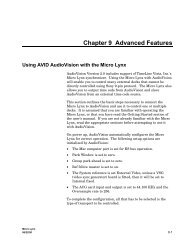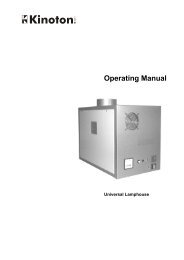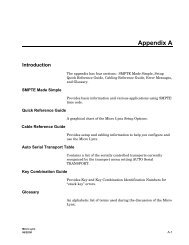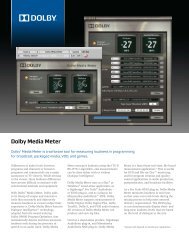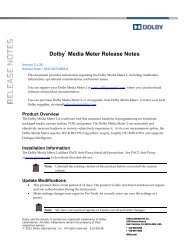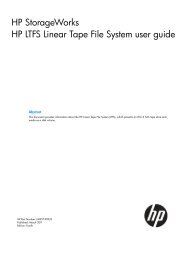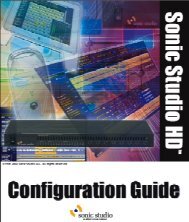Dolby LM100 Broadcast Loudness Meter User's Manual
Dolby LM100 Broadcast Loudness Meter User's Manual
Dolby LM100 Broadcast Loudness Meter User's Manual
You also want an ePaper? Increase the reach of your titles
YUMPU automatically turns print PDFs into web optimized ePapers that Google loves.
Getting Started<br />
2.4.1 Analog Inputs<br />
Each analog audio input jack accepts either a male XLR connector or a quarter‐inch TRS<br />
connector. The maximum input signal level is +22 dBu.<br />
2.4.2 Analog Outputs<br />
The Left and Right analog outputs are provided on standard RCA connectors for<br />
confidence monitoring of the active audio program. They carry a two‐channel audio signal<br />
automatically downmixed from a multichannel signal if necessary.<br />
2.4.3 Digital Inputs<br />
The digital input BNC connectors are AES‐3id compliant. The unit processes <strong>Dolby</strong> ® E,<br />
<strong>Dolby</strong> Digital, and PCM audio streams, with up to 24‐bit resolution. You can use the second<br />
BNC as a passive loop‐through to connect to other equipment; otherwise, it must be<br />
terminated using a standard 75 ohm termination.<br />
2.4.4 Remote RS-485<br />
You can use the remote RS‐485 port for software upgrades, to connect to a custom‐built<br />
remote‐control software interface, or to send system log file entries to any device that can<br />
receive ASCII text strings using the RS‐485 protocol. For details, see Section 5.7.<br />
2.4.5 Alarm<br />
Individual signal‐condition alarms trigger pins on this port. You can connect this port to<br />
any device that can detect a TTL voltage level change. For details, see Section 5.5.<br />
2.4.6 GPI/O<br />
Specific <strong>LM100</strong> status information and control inputs are provided through the GP I/O port.<br />
You can use a GPI/O device with the <strong>LM100</strong> without setting it to Remote mode. For details,<br />
see Section 5.8.<br />
2.4.7 NTSC<br />
The <strong>LM100</strong>‐NTSC includes a standard RF Input port. Use a standard 75 ohm RF cable to<br />
connect the <strong>LM100</strong> to either a cable TV input or an antenna receiving off‐air signals.<br />
The <strong>LM100</strong>‐NTSC Video Output is a standard composite video signal available on a female<br />
BNC connector. It allows confidence monitoring of the video for the active program.<br />
2.4.8 LTC<br />
The <strong>LM100</strong>‐LTC includes a Timecode Input port that can read linear timecode per the<br />
SMPTE 12M specification.<br />
6 <strong>Dolby</strong> ® <strong>LM100</strong> <strong>Broadcast</strong> <strong>Loudness</strong> <strong>Meter</strong> User’s <strong>Manual</strong>




